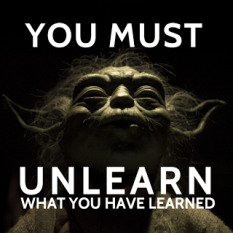Last week Pluralsight published the 2nd course in my Learning to Program series. It is “Learning To Program - Part 2: Abstractions”, and the course focuses on some of the topics I had to unlearn to learn.
 When I started learning to program Basic and assembly languages on a TI-99 4/A, I had no idea what computer programming was about and very few people who I could ask for help. Most of my time was spent trying to understand the syntax of the languages and putting together the right sequence of characters to make something work. I never gave a thought to algorithms, design, or code aesthetics, as the primary motivator was to color pixels on the screen and play musical notes.
When I started learning to program Basic and assembly languages on a TI-99 4/A, I had no idea what computer programming was about and very few people who I could ask for help. Most of my time was spent trying to understand the syntax of the languages and putting together the right sequence of characters to make something work. I never gave a thought to algorithms, design, or code aesthetics, as the primary motivator was to color pixels on the screen and play musical notes.
I do remember being stumped trying to generate a random number using assembly language instructions. How do you get a giant calculator to produce an accidental value? This question led to hours of metaphysical thinking by a teenage boy. The whole idea of randomness with electronics never did click for me till Douglas Adams wrote about putting an atomic vector plotter inside a Brownian Motion producer.
University mostly reinforced the idea that computer programming was all about technical knowledge. So did every job interview I ever had.
It’s easy to be a software developer and not see the forest for the trees. It took me a long time to change my focus.
In this course I wanted to give students a different perspective on programming than the one I started with by deemphasizing low level technical details and language syntax as much as possible. Instead I wanted to emphasize how to think about software decomposition and composition from the start, so a student would have some idea about the forest they live in. That’s one reason I chose Python as the programming language for this course.
Python is a beautiful, clutter free language that runs nearly everywhere. You can focus on design after learning just a few keywords and symbols. Python is also easy to work with. The REPL can provide instant feedback on both the syntax and the behavior of code.
In the course I cover everything from how to use the REPL to the different data structures available with Python. I also show how to break a program into functions and how to use a class definitions to create objects.
I talk about object oriented programming but I never talk about inheritance and polymorphism. Instead, I talk about building abstractions. Functions are abstractions, and objects are abstractions, too. When I was a student I would think that a hash table would be a perfectly reasonable abstraction for a shopping cart. I want today’s students to know the hash table can be an implementation detail and something you can encapsulate into a better abstraction for a shopping cart.
This course is about the single responsibility principle and the mantra of “design for use, not reuse”, although those words are never spoken verbatim. Knowing Big-O notation and how to work with pointers is incredibly important to build software correctly. But, I think those concepts receive too much of the spotlight in programming introductions, leaving many to believe, like I did, that you should solve every problem using lists of strings and numbers.
I hope everyone who watches enjoys the course and starts off with a better perspective on how to build software.

 OdeToCode by K. Scott Allen
OdeToCode by K. Scott Allen